9 tips for choosing tools to protect wood from decay, moisture and fire
Wood is a universal building and finishing material. They build houses out of wood pergolas, fences, it is made of furniture, it is used as outside and interior decoration. Such popularity is explained by the environmental friendliness of the material and its beautiful appearance, but, alas, the tree has many enemies - it is afraid of fire, moisture, insects, temperature extremes and sunlight. Previously, wood was protected with compounds based on salt and vinegar - today, industry allows for the production of more effective products that give the tree longevity and resistance to negative environmental factors. There are so many of these compounds that it becomes difficult to choose the right tool to protect wood from decay, fire and other influences. We will understand the basic aspects of a competent purchase.
No. 1. From what and in what cases to protect wood?
Wood preservatives are directed against various negative influences, and the choice depends on the conditions under which the material will be used. The main enemies of wood are:
- moisture (fog, rain, high humidity in the room) The tree is characterized by the ability to absorb moisture and swell when it is elevated in the environment and, conversely, dry out in dry times. Such fluctuations in volume lead, at a minimum, to cracks, and when a building is constructed of wood, the entire structure can be seriously damaged. Therefore, it is necessary to process wood with agents that reduce moisture absorption, but do not affect the ability to "breathe";
- mold, fungus, mosses and insects often affect wood in high humidity and limited air supply. Rotting, the appearance of moss, the spread of bark beetles, termites, woodworms and other pests affects not only the appearance of wood, but also its structure;
- Fire. Wood is highly flammable and burns quickly. While there are no funds that would be 100% protected from fire, but there are substances that affect the structure and increase the time of fire protection;
- UV rays with prolonged and intense exposure, they destroy wood, most affecting lignin, a substance that provides rigidity and hardness.
To increase resistance to all these factors, there are a number of specific tools - a complex composition does not yet exist, therefore, if the wood needs to be protected, for example, from moisture and fire, it will require the use of several tools.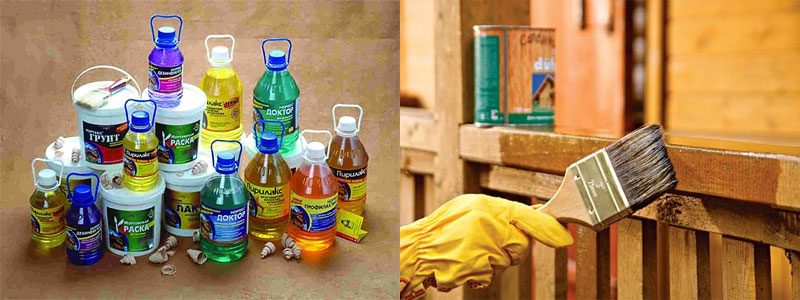
No. 2. General principles for the selection of wood preservatives
Regardless of the struggle against which factor the tool is directed, when choosing, pay attention to such nuances:
- coating life. The protective agent can last on the surface for about 2-5 years, and if the manufacturer indicates such numbers on the packaging, then it probably does not lie, but it is worthwhile to be careful about durability of 20-40 years.Most likely, this is just a marketing move, and in small letters in an invisible place on the package it will be indicated that such a period of protection is possible only when applying the product by deep impregnation (this is an industrial technique) or if the composition is washed out, which is impossible to achieve;
- composition consumption. Often, cheap products are unpleasantly surprised by the increased consumption of the composition, which is why all their efficiency is negated, so when buying, pay attention to the numbers indicated by the manufacturers. The average consumption of bioprotective agents is 200-250 g / m2but not 500-600 g / m2that can be seen on the packaging of some inexpensive formulations. Such a high flow rate is characteristic only of flame retardants;

- manufacturer name. High-quality protective equipment can only be manufactured on high-tech production lines that large enterprises with a well-known name can afford. For the sake of your peace of mind and guaranteeing the result, it is better to overpay a little;
- universality. Some companies offer complex products that supposedly protect wood from fire and rot, and the active substances, according to the manufacturers, only enhance each other's effect. Experts argue that even substances that can be in the same solution sometimes not only do not enhance each other's action, but also reduce protection;
- composition and certificate of conformity. The composition of protective agents includes a mass of substances, each of which has its own role, but attention should be paid to the basis of the drug - it can be organic and inorganic substances. Inorganic substances, which include sodium and potassium dichromates, chloride, chromium and fluorine compounds, copper and zinc salts, adversely affect humans, metals and wood color, therefore they are prohibited for use in Europe. Organic products are more effective and avoid the negative effects on health. Any protective equipment must have a certificate of conformity confirming its safety.

No. 3. Wood Protection Methods
To ensure the longest possible preservation of wood, a set of measures is used. These are constructive decisions consisting in the correct placement and planning, as well as regular monitoring of the condition of the wood and directly the means for protecting wood.
Protective agents can be applied in the following main ways:
- antiseptic - surface treatment of wood. In private construction, it can be carried out with a brush or spray guns, and in industrial conditions it is carried out by soaking in protective compounds;
- canning carried out only in an industrial environment. For this, autoclave impregnation can be used when the treatment is carried out under the influence of high pressure, impregnation in hot-cold baths or autoclave-diffusion treatment.

Number 4. Means for protecting wood from moisture
Increased humidity is the main enemy of wood, as it not only degrades performance, but also causes mold and fungus. Processing, aimed at protecting against moisture, begins with the harvesting of wood, and proper drying is of great importance. Even a well-dried material will begin to absorb moisture over time, but also by this parameter different types of wood differ considerably. Larch, ash, pine, oak are more resistant to moisture, spruce, fir and beech are medium resistant, and maple, birch and hornbeam are the most vulnerable. A number of tropical trees (Kumaru, Kushiya, Ipe, Sisal) are practically not afraid of moisture and need only minimal protection.
The most important indicator of wood - intracellular moisture. For construction, you can use a material with an indicator at the level of 5-20%, and for the installation of rafter structures and interior decoration, wood with a moisture content of 9-15% is suitable, and for external cladding - 12-18%.
To reduce the ability of wood to absorb moisture from the environment, i.e. to reduce its hygroscopicity, use varnishes, oil impregnations and pasteswhich are divided into two groups:
- surface film formulations, do not differ in sufficient durability, therefore it will be necessary to repeat processing often enough;
- penetrating compounds more durable and able to enter the pores of wood, used to process fences, window framesthe walls of the house garden furniture.
As a rule, water repellents do not change the color of wood, and their effect is that water droplets simply slide off the surface without penetrating the structure. A number of such products also have a frost-resistant effect.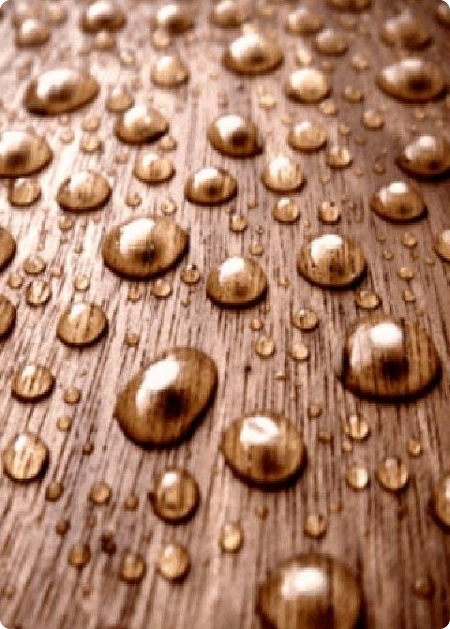
No. 5. Means for protecting wood from rotting, mold and insects
Constant increased humidity, temperature fluctuations and intense exposure to sunlight make the wood vulnerable to microorganisms and insects. As antiseptics are used to prevent mold - means that prevent, but do not kill bacteria. Already during the harvesting of wood it is covered with antiseptics, re-processing is carried out after installation and cleaning of wood. Antiseptics are produced in the form of liquids and pastes, they also reliably protect against insect damage. there is primers antisepticswhich use under varnish and paintingbut their penetration and service life is small. Antiseptics can be tinted, and experts say that in this way it is much easier to achieve uniform coloring of the walls than when using tinted varnish.
If the wood already has traces of rot, then before using an antiseptic, processing is necessary fungicides - substances that kill spores of fungi and mold. The basis in fungicidal solutions can serve:
- water. These are environmentally friendly and inexpensive compounds, the disadvantage of which is that they are gradually washed with water, therefore they are suitable only for internal processing of wood, which does not interact with moisture and soil;
- White Spirit. Such drugs are more resistant to external influences, poorly washed with water, as they penetrate deep into the wood, but are not very environmentally friendly, have a pungent odor, which greatly complicates the processing.

If traces of insect exposure are found on wood, treatment should be carried out. insecticidal treatmentwhich are issued:
- water based. Used mainly for annual protection of wood during transportation and storage;
- on an alkyd basis, these are more stable agents that are suitable not only as therapeutic drugs, but also as prevention.
Regular monitoring of the state of wood by the smell of rot, the presence of white thin or bluish and brownish films will prevent rot in time.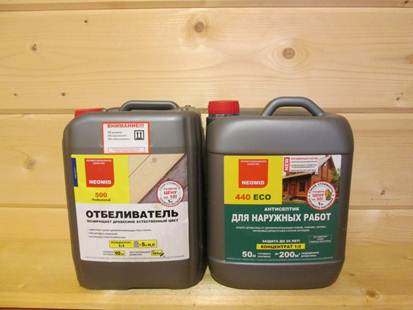
Sometimes you may need wood bleaching agents and eliminate bluish, greenish and black spots. Such substances are applied with a brush to damaged areas, and after a few hours the original color returns.
When buying antiseptic formulations, pay attention that different breeds absorb compounds with different intensities. So, birch and beech are highly absorbent, cedar, larch, oak, linden, hornbeam are medium, and spruce and fir are low. In addition, completely different compositions are used for different purposes. If during transportation the wood needs only preventive treatment, then during the construction of the rafter system it is necessary to use hard-washed products, which often color the wood in brownish and grayish shades, reducing its decorative qualities, therefore, for facades such remedies are not suitable.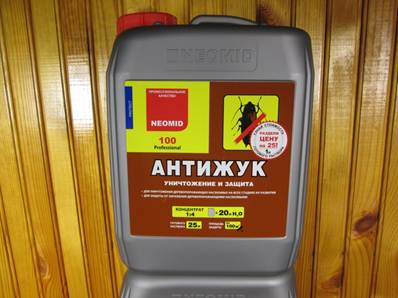
No. 6. Means for protecting wood from fire
When exposed to fire, wood sooner or later ignites, though large logs resist fire much longer than planks, since a charred layer forms on their surface, which slowly smolders. Any chips and cracks increase the vulnerability to the flame. To protect wood from fire, use flame retardantsthat are capable of delaying the ignition and spread of fire.
Fire retardants are available in the following forms:
- liquid formulations: varnishes, impregnations, enamels and paints;
- solid formulations: backfill and coating.
Previously, flame retardants were everywhere available in solid form; today the market offers predominantly prepared liquid solutions or concentrates. This form of release allows you to use the tool more efficiently and at the same time increase safety, because when working with powders poisonous dust will inevitably get into the body, and additional equipment is required, which complicates the processing process.
Fire retardants according to the principle of action are divided into:
- active, this is mainly impregnation, which includes salts of phosphoric and boric acid. Under the influence of high temperatures they melt, forming a protective layer that prevents the spread of fire;
- passivewhich include fire retardant coatings that create a thin heat-reflecting layer on the surface of wood. When exposed to high temperatures, it swells, forming a screen of non-combustible foam, which slows down the spread of flame and carbonization of wood.

The protection applied under industrial conditions will be of the highest quality, but you can also carry out a similar treatment yourself using a brush, roller or aerosol. Processing wood with a moisture content of more than 15% is not recommended. For well-dried wood, compositions based on organic polymers are suitable, and for non-wood with a moisture content of 10-15%, it is better to use water-soluble flame retardants to guarantee. Small wooden elements can be dipped in a solution and left there for a period from 30 minutes to 24 hours.
By effectiveness, all flame retardants are divided into groups:
- G1 - means by which the wood loses up to 9% of the mass after a two-minute exposure to a gas burner flame;
- G2 - funds with weight loss up to 25%;
- G3 - means that do not provide adequate protection for the tree.
For processing stairs and supporting structures choose protective equipment of class G1, in all other cases flame retardants of class G2 are suitable. If the manufacturer does not indicate effectiveness at all, then it is better to refuse to buy such a tool.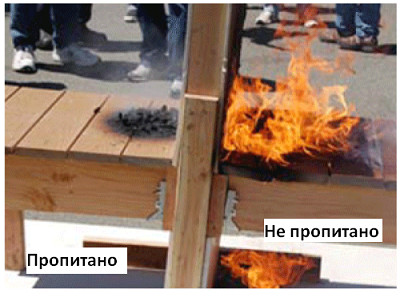
Number 7. Means for protecting wood from ultraviolet radiation
Under the constant action of sunlight, the wood begins to darken and collapse, so if such an effect on the material is inevitable, negative consequences must be prevented. As a rule, special additives to prevent the harmful effects of sunlight are part of water-repellent impregnations and bioprotective agents, varnishes and paints, as indicated by the corresponding inscription on the package.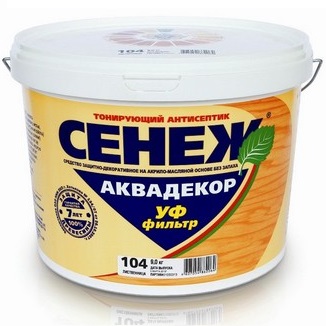
Number 8. Sequence of application of protective equipment
To ensure maximum preservation of wood, it is treated with protective agents in the following sequence:
- antiseptics at the stage of procurement and transportation, as well as after the construction of the structure, of furnitureorganization of decoration;
- flame retardant treatment if necessary;
- treatment with water-repellent impregnation, which will also prevent leaching of flame retardant and antiseptic;
- application of paints and varnishes with UV protection;
- sealing joints and seams with acrylic sealant - An important process that prevents the penetration of moisture into the wood.

No. 9. Wood Protector Manufacturers
Shelves are filled with various wood preservatives, but not all of them are equally effective. When choosing, it is worth paying attention to the instructions on the package, includingtake into account the effect of the product on the color of wood, its corrosiveness and odor, and also take into account the name of the manufacturer, which becomes a guarantee of quality. Among all the abundance of funds, it is worth highlighting the products of such companies:
- Pinotex - Estonian manufacturer of wood preservatives. Its products have gained immense popularity in the domestic market. It produces compounds for protecting wood inside and outside the house: primers, impregnations, paints and antiseptics. Antiseptics have proven themselves excellently primer typetinted antiseptics, as well as antiseptics with an ultraviolet filter. The company's protective equipment, intended for use on terraces and outdoor areas, has been named one of the best;

- Tikkurila - A concern with 150 years of history, whose plants are located in several countries. The name of this manufacturer is a guarantee of product quality, since all stages of production are carefully monitored here. There are a lot of remedies for wood, produced under the brand name Valtti;
- Belinka belles - Slovenian manufacturer that is rapidly gaining the recognition of domestic buyers. It produces a wide range of protective equipment, including antiseptic primers, indelible antiseptics, special protective agent for saunas and a unique hybrid coating;

- Senezh - A domestic company that produces a full range of tools to protect wood from any negative influences. It produces tinting antiseptics with a UV filter, antiseptics for baths and saunas (these funds, by the way, are considered one of the best of their kind), preserving antiseptics, fire-bioprotective agents, substances for bleaching wood;
- Neomid - a brand of protective equipment from the company Experttekologiya-Neokhim. The domestic manufacturer relies on the production of concentrated drugs, which reduces their cost. Antiseptics for protecting wood in a humid environment and soil, antiseptics with UV protection, wood bleaching agents, fire protection, as well as substances for treating saunas and baths are popular.

In addition, protective equipment from a Belarusian company performed well. SadolinGerman DufaEnglish Dulux, domestic companiesRogneda"(Aquatex trademark) and"Wood healer».
There are a lot of folk remedies to protect wood from rot and pests, but for best results, it is better to give preference to professional preparations and apply them in accordance with the instructions.

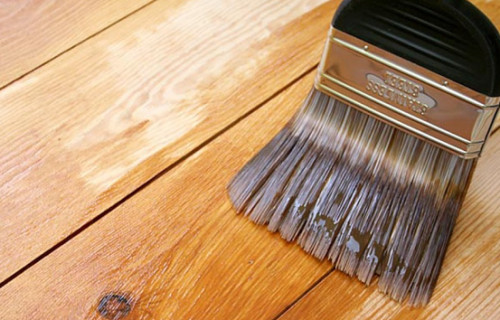

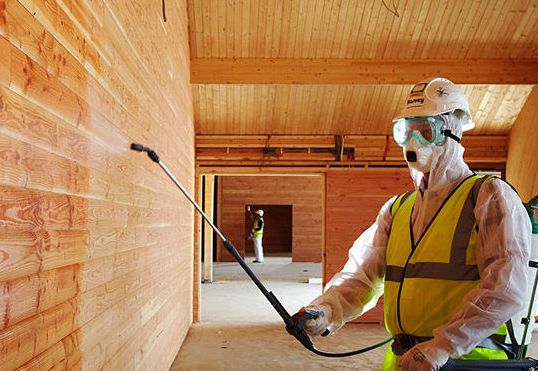
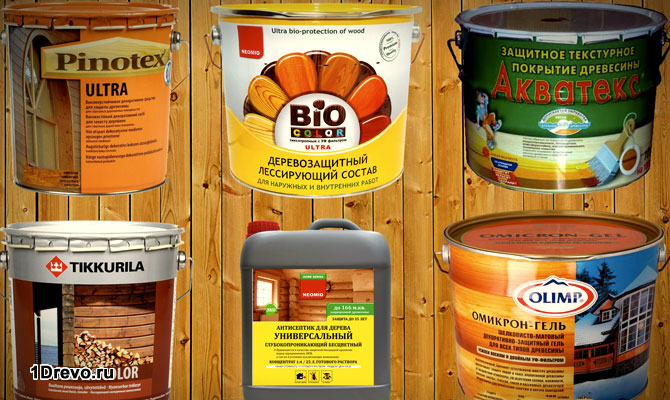

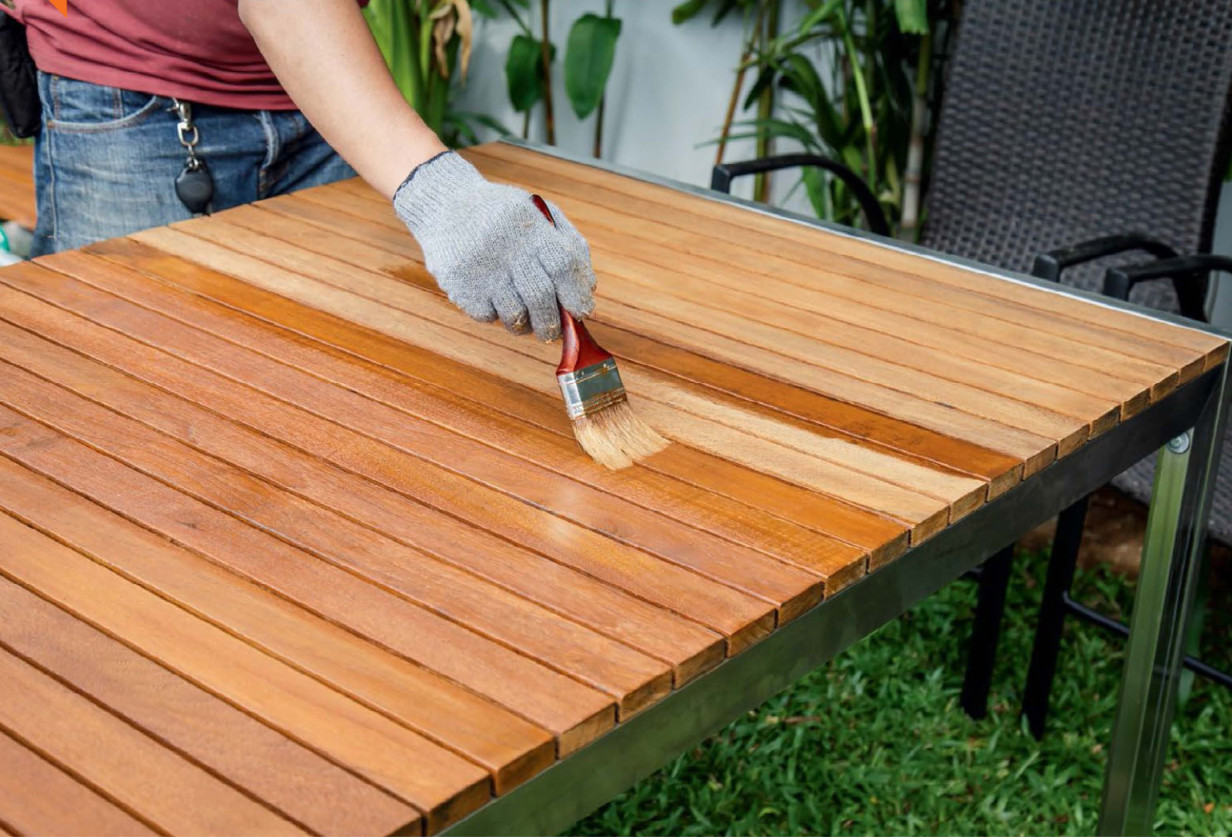
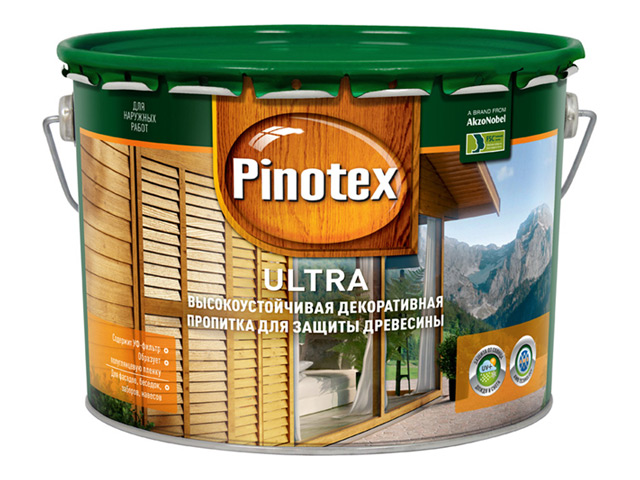
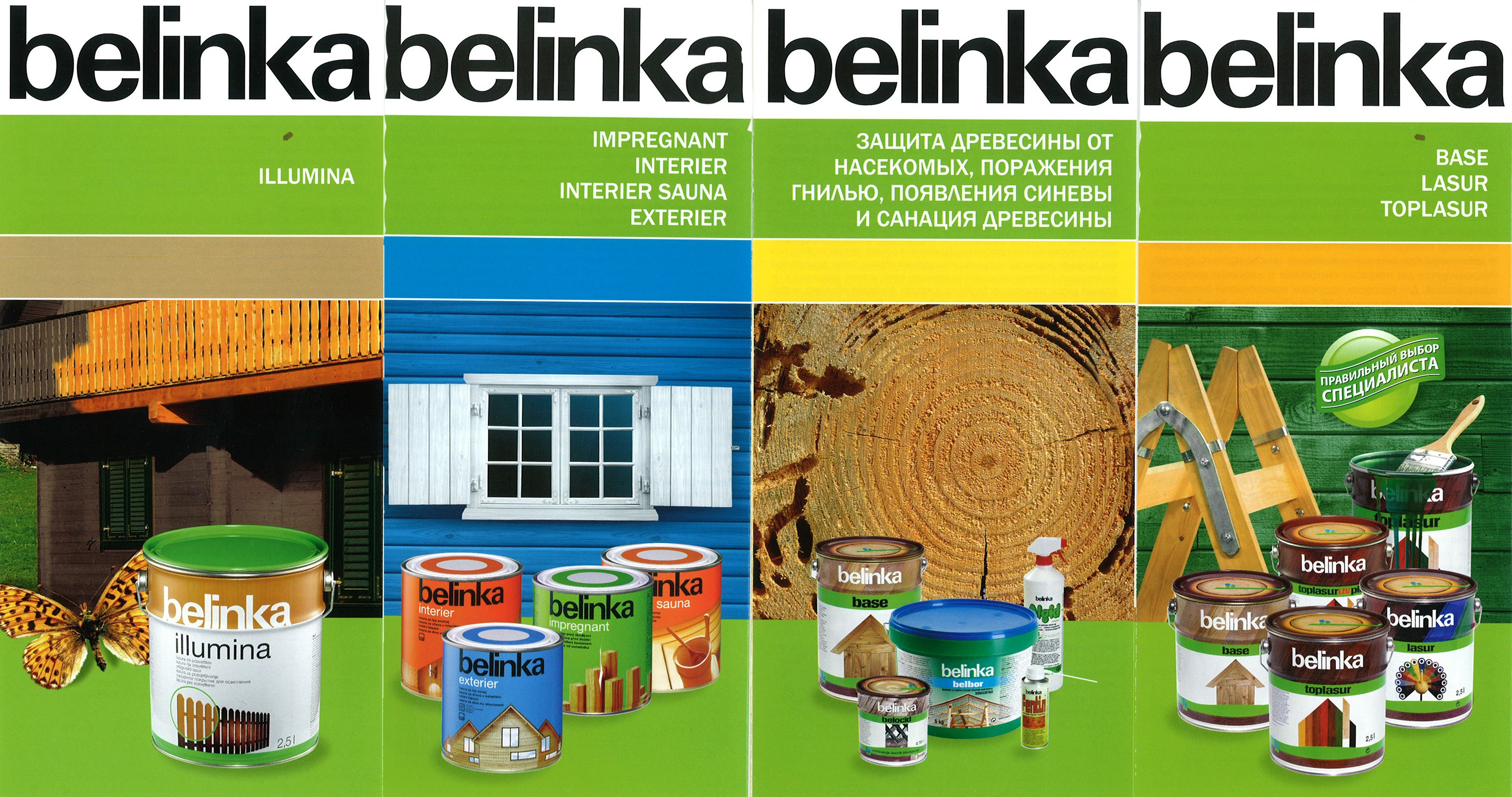
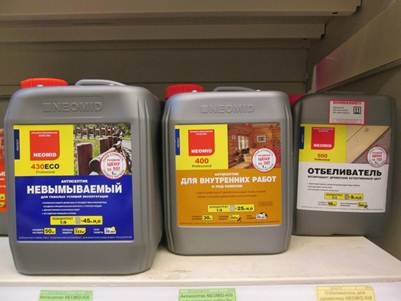
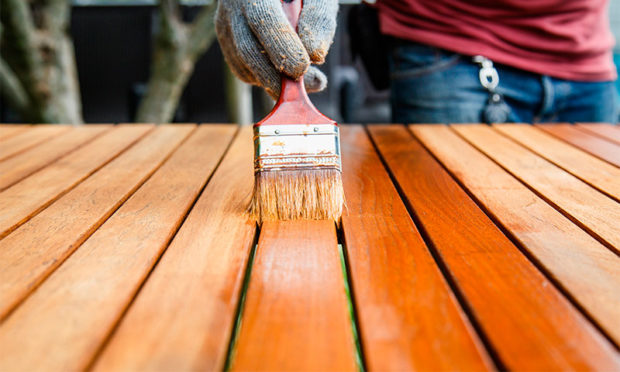
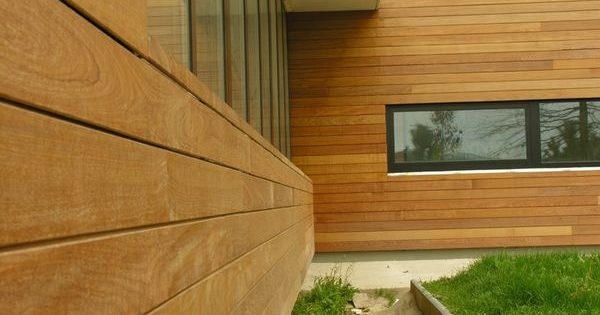
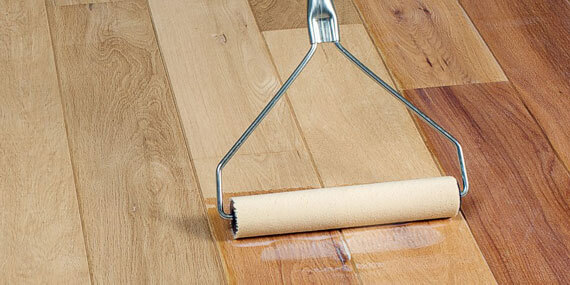
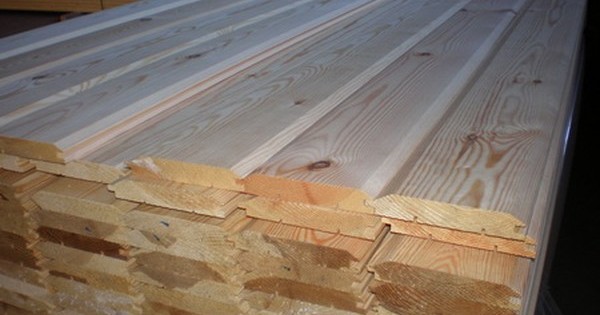

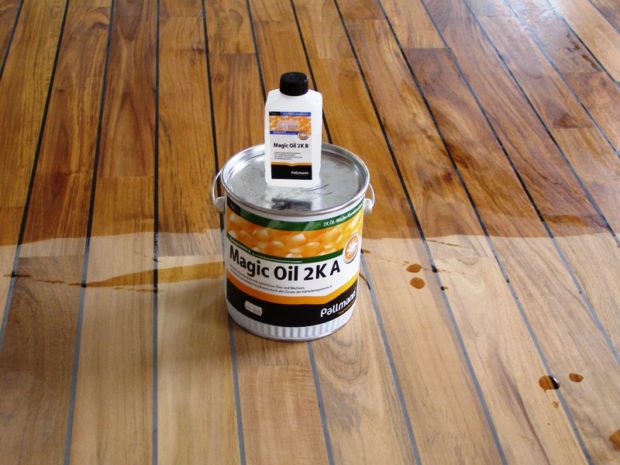
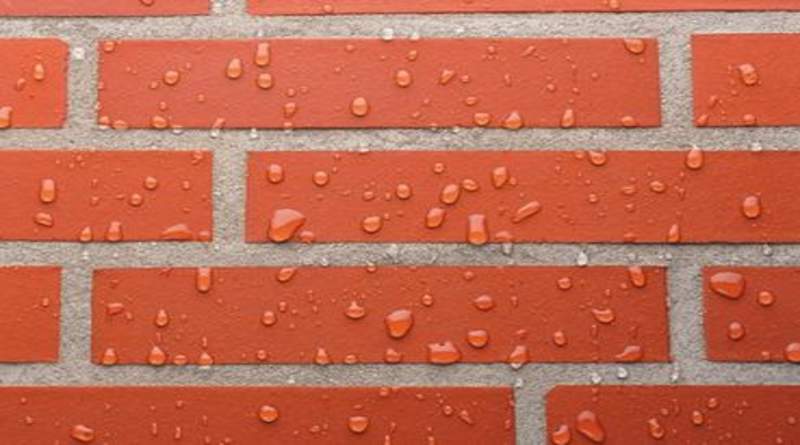
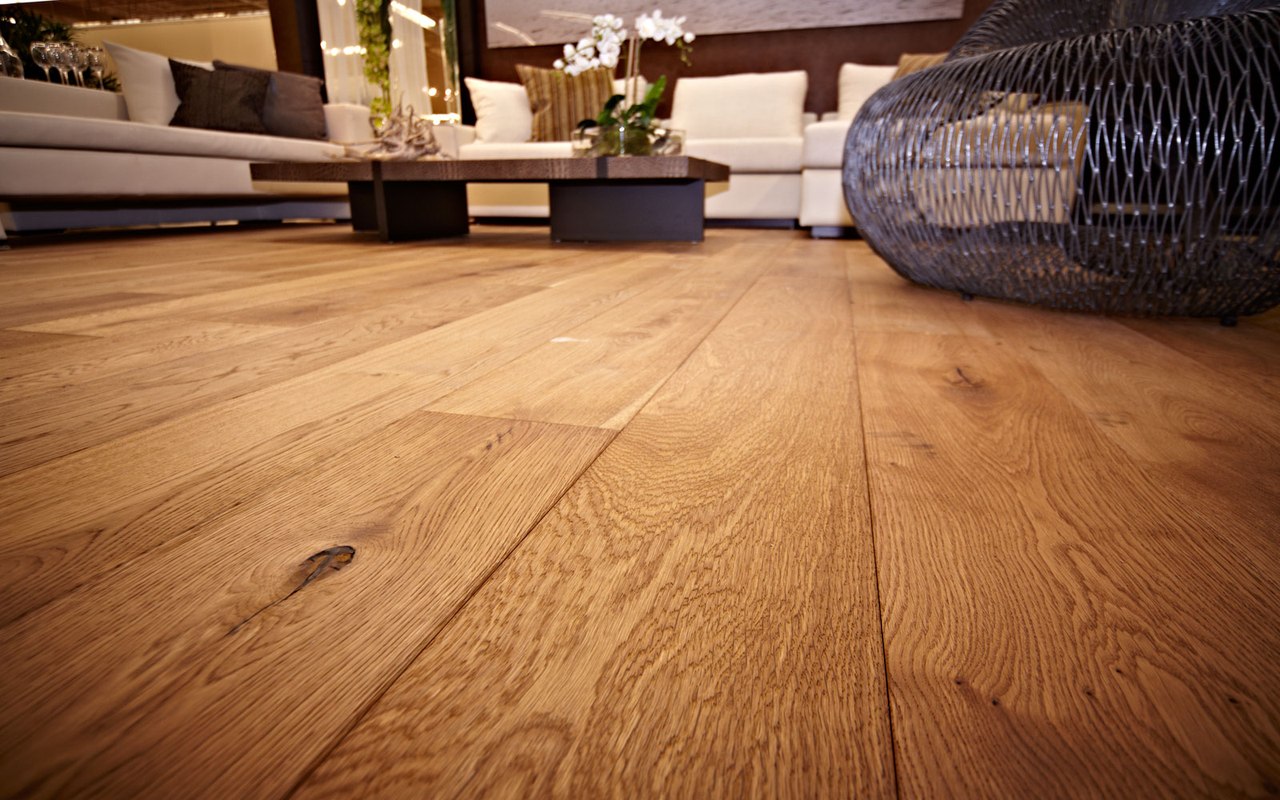
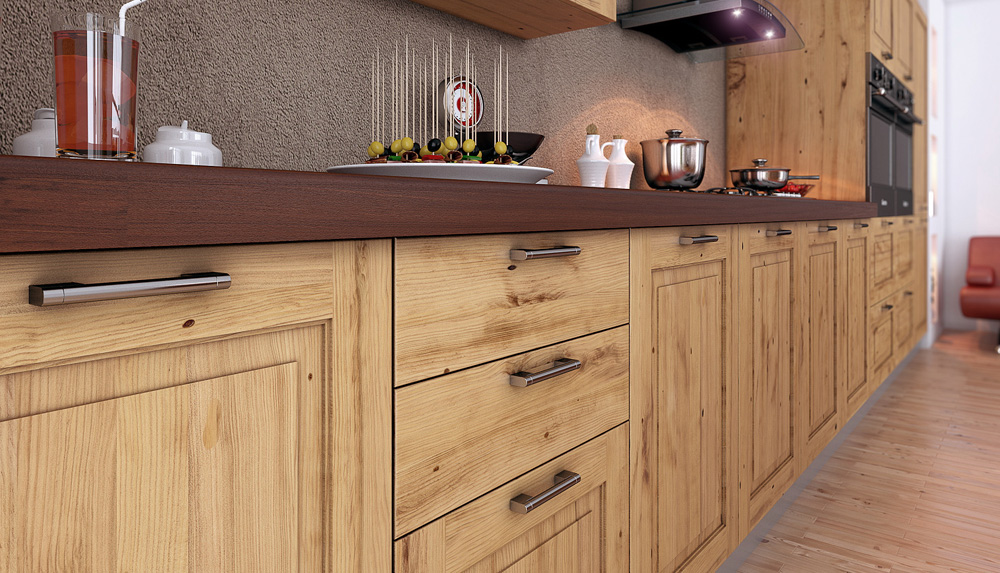
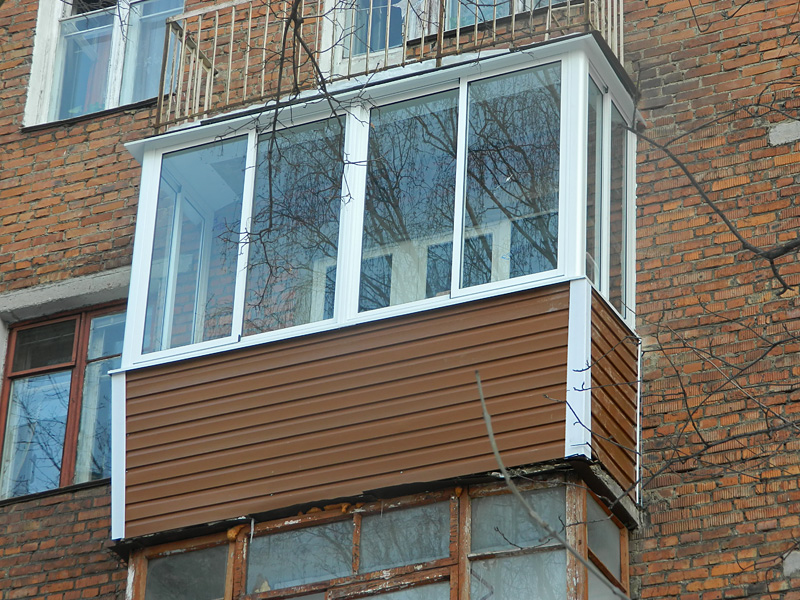
Good article. I emphasized a lot of interesting things for myself